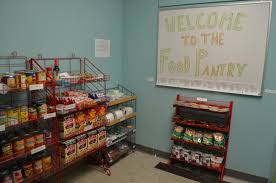
In a nation where tuition is increasing substantially and student debt is at an all time high, many students have been left deciding if they have enough money to pay for food or their tuition.
According to a study by the University of Oregon student hunger is on the rise. By 2014 it was estimated that over half of students at some point have to chose between going hungry for a day and paying for other life expenses such as housing and education.
Many students who attempt to register for federal aid with Supplemental Nutrition Assistance Program (Snap), are having difficulty due to increased regulations. Students who wish to register must work through a federal work study program, or be fully employed and work a minimum of 20 hours a week.
“I work a good job but still don’t qualify for food stamps because I don’t work every week,” said one SOU student who wished to remain anonymous, “It’s a big financial burden it’s one of the reasons I have to sell weed to pay rent and utilities.”
The Food Research and Action Center (FRAC) estimates that one third of University students are registered for food stamps. According to the FRAC by Aug. 2015 the total number of SNAP participants has been reduced by 1 million, not necessarily because they are no longer hungry but also due to increasing restrictions. That same year students registering for SNAP doubled.
In spite of the new restrictions, according to USA Today, the total number of students who use food stamps has doubled over the past 10 years. In 2001, 5.4% of students enrolled in school, ages 19 to 24 received SNAP, whereas in 2010, 12.6% of students in the same age group were SNAP recipients.
A look at student hunger closer to home reveals that the Rogue Valley is far from immune to this crises. Oregon Action, a social justice group stationed in Medford, has been documenting student debt for the better part of 2015. In their survey (they have) found data that directly connects food insecurity with student debt. The Student Debt Survey, which will be available in its entirety through Oregon Action in Jan. 2016, found that students take on debt as a necessary way to afford their education and resoundingly agree that state policymakers are not doing enough to support university students.
“The state and Federal government are responsible for changing this. I have $32,000 in debt, I don’t have support from my parents. I can’t even afford clothes and always worry about how I am going to be able to afford food,” said one participant of the survey.
Key preliminary results of the survey indicate that 57 percent of respondents said they struggle to afford housing and 46 percent said they are food insecure. Even among respondents working at full-time equivalent job – 46 percent go hungry.
“I wish the University did more to help students with this kind of thing,” said SOU senior Mckenzie Ryan Oakes, “I think it’s bullshit that while students are freshmen they have these great food programs with the school and then when they become sophomores and move out of the dorms they’re totally on their own. I’ve been going here for over 5 years and just now have been able to apply for stamps, which are very helpful, I actually have some money now that I don’t have to spend it all on food. ”
Students who have large debt and are hungry have often felt shame over needing government assistance. Another participant of the survey said “Why should I feel guilty for wanting to be successful. Why should I be punished so I can’t afford a house or even food. It’s not fair.”



